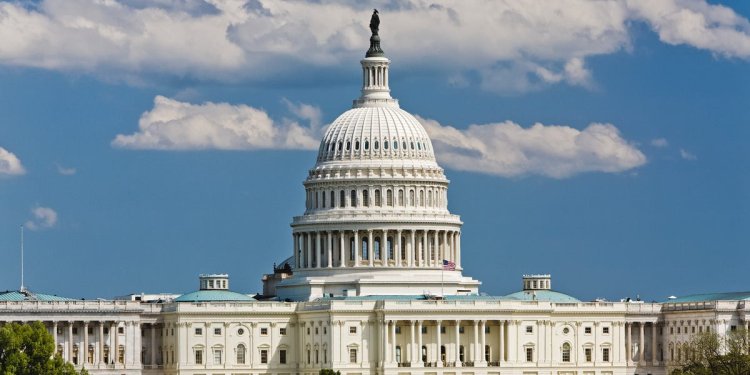A US soft landing would only be possible through fiscal measures like student-loan forgiveness and tax cuts, economist says
Drivers of US growth present during 1995's soft landing aren't present, so fiscal measures may be necessary, Piper Sandler says.

Getty Images
- If the US wants a soft landing, it needs to enact fiscal measures like student-loan forgiveness and tax cuts, Piper Sandler's chief global economist said.
- Drivers of US growth seen during 1995's soft landing aren't currently present, so government spending may be necessary to buoy GDP, according to Nancy Lazar.
- "There could easily be an additional 1.5% boost to GDP from fiscal stimulus this year," she wrote.
If the US economy wants to stick a soft landing, the government is going to have to loosen the purse strings.
So says Piper Sandler's chief global economist Nancy Lazar. She argues that without traditional drivers of growth fueling the economy, avoiding a recession will require some fiscal largesse like student-loan-forgiveness plans and tax cuts.
"In order to have a soft landing in 2024, additional fiscal stimulus would be needed (such stimulus definitely kept the economy stronger, longer in 2023)," Lazar wrote in a note on Monday.
There are three times in history that the US has been able to nail a soft landing: 1967, 1985, and 1995. But Lazar notes that there are certain factors that helped the economy land softly during those eras then that are absent today, like easy commercial-bank-lending standards (present all three times), growing real revenues for corporations (present in 1995), and an uninverted yield curve (present in 1995).
So if those typical boosters of the US economy won't prop up growth in 2024, it'll have to come from somewhere else. That's where the government comes in, according to Lazar.
She says possibile measures include student-loan forgiveness, doling out grants under the CHIPS Act, and proposals like the Wyden-Smith tax cut, which is currently sitting in the Senate. There are also other factors like employment retention credit.
"Putting all the above together, there could easily be an additional 1.5% boost to GDP from fiscal stimulus this year," she wrote.
That would raise Piper Sandler's real GDP forecast to a 0.5% expansion this year, instead a 1% contraction. For context, they're on the more bearish end of the spectrum as the Congressional Budget Office currently expects more robust growth of 1.5% in 2024. Meanwhile, economists surveyed by Bloomberg see 2% expansion this year.
One drawback to this approach is that it would make it more difficult for the Fed to cut rates in the face of such a strong economic backdrop. In the previous instance of 1967, Fed Chair Bill Martin boosted GDP, pushed unemployment lower, and sent stocks soaring — hardly conditions conducive for rate cuts.
Lazar cites 1967 as a cautionary tale in the event the Fed enacts fiscal measures to further stimulate the economy. After the late-1960s boom time, the US eventually battled runaway inflation.
"Easing amid material fiscal stimulus risks repeating the Martin Fed's mistake...which set the stage for the 1970s' disastrous inflation cycle," she wrote.
What's Your Reaction?




















